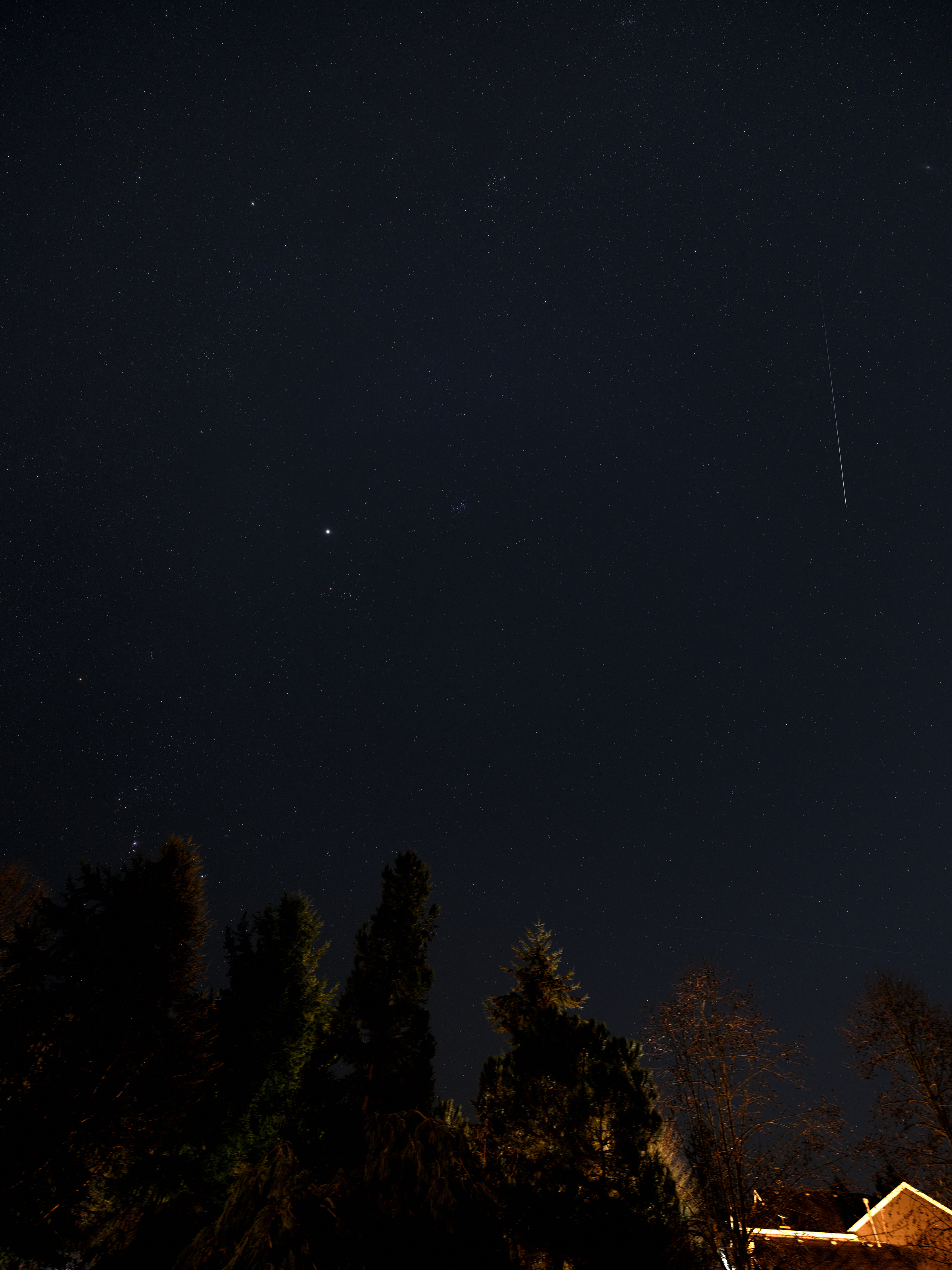One of my Christmas presents was an inexpensive tracking (astronomy) mount. We finally had some clear nights, so I have been learning how to use it. (Never mind that I used to do this for a living; back then, on million-dollar telescopes, things like tracking the moving stars was something that just worked!)
In this case, I have to align the mount to the celestial pole (near Polaris; the point around which the sky appears to rotate in the northern hemisphere). That’s always fun - half bent over, squinting at a tiny poorly projected image of the desired position…I will leave that out of it for now.
I finally started getting a decent polar alignment on my third or fourth night out, and the shot above was one of the first ‘good ones’. The stars are round—pinpoints, actually; the Fuji 20-35mm lens is dead sharp. That’s good!
This is a 30-second exposure with the lens wide open at f/4. Focal length is on the wide side of the lens’s range, about 21mm.
The stars are so pin-point that they don’t actually show up all that well, although I’ve tried to brighten the image a bit to make them stand out at least a little. But they look quite dim, sadly, due to the image compression. The Pleiades itself is a little cluster of stars just above the image center. Zoom in to see what’s really there.






I definitely recommend zooming in and scrolling around. On the left side, just above the trees you can see the Orion Nebula. Towards the upper right corner, there is the Andromeda Galaxy, faint and fuzzy. And that really bright "star" in left center is not a star at all, but the planet Jupiter.
I have thought about getting one of these small trackers - which one did you get?
That is really cool! :)